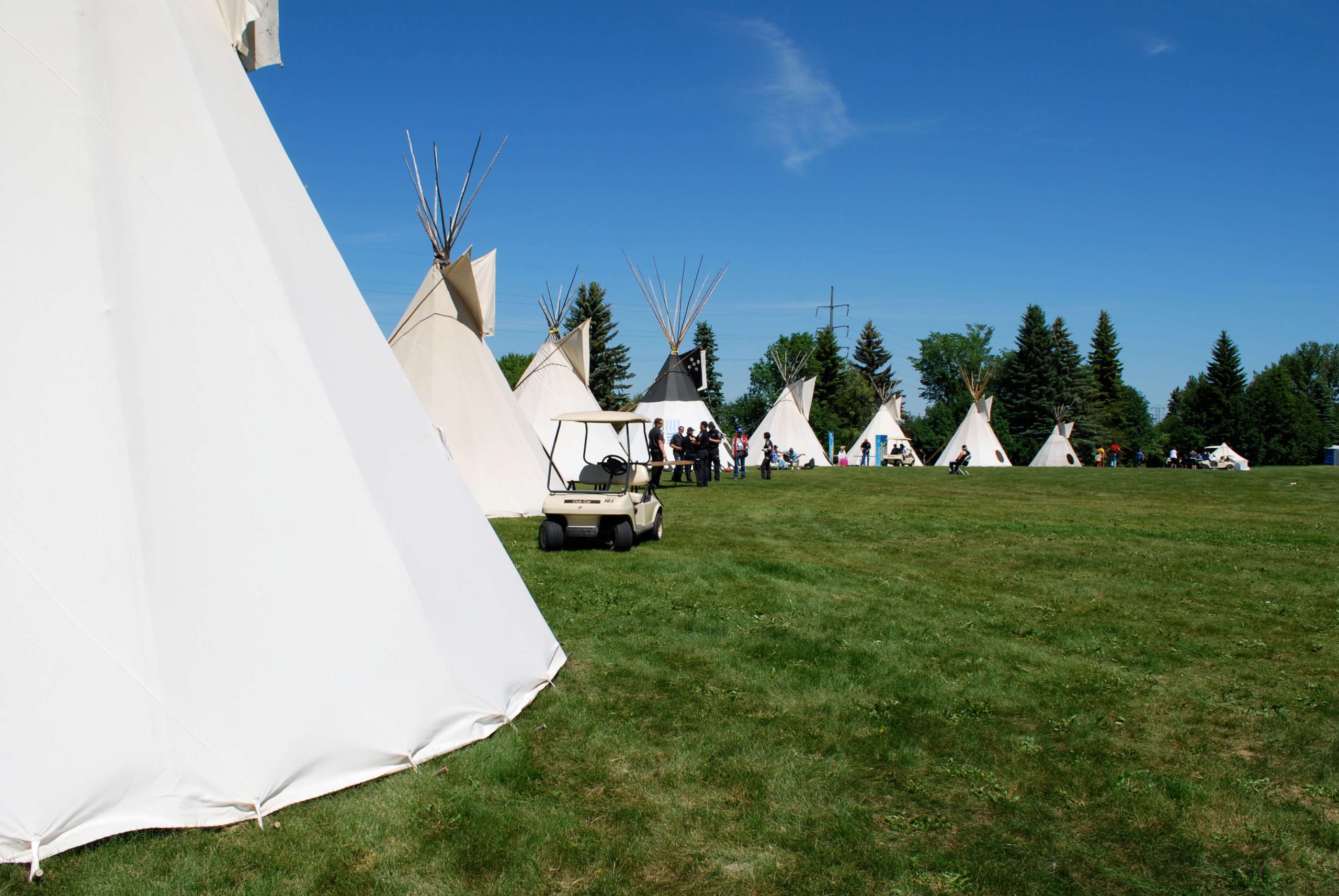
A row of the Tipi Village at the Saskatchewan National Event
Current Reality
April 16, 2024: Budget 2024 invests $918M over 5 years to accelerate work in narrowing First Nations, Inuit, and Métis housing and infrastructure gaps. Only $176M is budgeted for the 2024-25 fiscal year. The AFN estimates $350B is needed to close the gap by 2030; the Inuit Tapariit Kanatami estimate that $55.3B is needed over 10 years PLUS $800M annually for operations and maintenance for the next 25 years.
March 19, 2024: Four audits and 20 years later, the federal government and the Canada Mortgage and Housing Corporation, commonly called the CMHC, have made “little progress” in improving housing in First Nations communities across the country, says Auditor General Karen Hogan. “Indigenous Services Canada and the Canada Mortgage and Housing Corporation have been mandated to work with First Nations to meet their housing needs by 2030. We found that 80% of these needs were still not met with 7 years left before 2030,” Hogan said in a report issued Tuesday.
According to the audit, there are 119,000 housing units in approximately 600 First Nations in Canada. Hogan found that people living on First Nations are “4 times more likely to live in crowded housing and 6 times more likely to live in housing in need of major repairs than non‑Indigenous people, according to Canada’s 2021 Census.”
First Nation, Inuit and Métis are the fastest growing population in Canada – increasing 9.4 per cent from 2016 to 2021 according to the latest census.
Sept. 22, 2022: The 2021 census finds about 17.1 per cent of Indigenous people live in crowded homes, and 16.4 per cent live in homes in need of major repairs with the worst conditions on the prairies. Manitoba had 36 per cent of its First Nations population living in crowded housing, with 29 per cent in housing in need of serious repairs. In Saskatchewan, the figure came in at 34 per cent and 25 per cent.
Other facts (not from the census):
- One in five Indigenous people who live off-reserve are homeless or live in overcrowded, unsafe or inadequate housing.
- A new Statistics Canada study, commissioned by The National Indigenous Fire Safety Council (NIFSC) Project and funded by Indigenous Services Canada finds that mortality and morbidity related to fire, burns, and carbon monoxide poisoning Indigenous Peoples are:
- over five times more likely to die in a fire.
- That number increases to over 10 times for First Nations people living on reserves
- Inuit are over 17 times more likely to die in a fire than non-Indigenous people
- Rates among Métis were higher than non-Indigenous estimates (2.1), but these rates were not significantly different.
- There is no national fire protection code that mandates fire safety standards or enforcement on reserves. All other jurisdictions in Canada including provinces, territories, and other federal jurisdictions (such as military bases, airports, and seaports) have established building and fire codes.
Inuit
Throughout their traditional homelands, Inuit face an acute housing crisis which threatens their health and safety. This persistent and growing housing shortage has been characterized as one of the most significant public health emergencies in this country. Severe overcrowding, substandard homes, and a lack of affordable and suitable housing options has left many Inuit families one step away from homelessness; an unsettling reality in one of the harshest climates in the world. In Nunavik alone, over half of Inuit families live in overcrowded housing. In far too many communities, up to 15 people, including young children, live in small and crumbling three bedroom units. The effect of these conditions, on children in particular, is deeply troubling. Overcrowding results in higher levels of domestic violence and abuse, placing children in unacceptably vulnerable situations.
The lack of decent and affordable housing continues to have serious public health repercussions throughout the Inuit territories. Tuberculosis, which is rare in southern Canada, occurs among Inuit at a rate over 250 times higher than for non-Indigenous Canadians. Inuit families are at higher risk for mental health problems, including stress and anxiety. High levels of respiratory infections among Inuit children, such as chronic lung disease after lower respiratory tract infections, are also linked to crowding and poorly ventilated homes.
“We can do better: Housing in Inuit Nunangat”. Report of the Standing Senate Committee on Aboriginal Peoples, 2017
